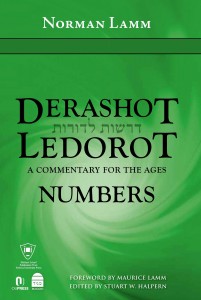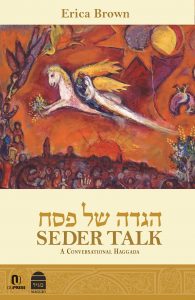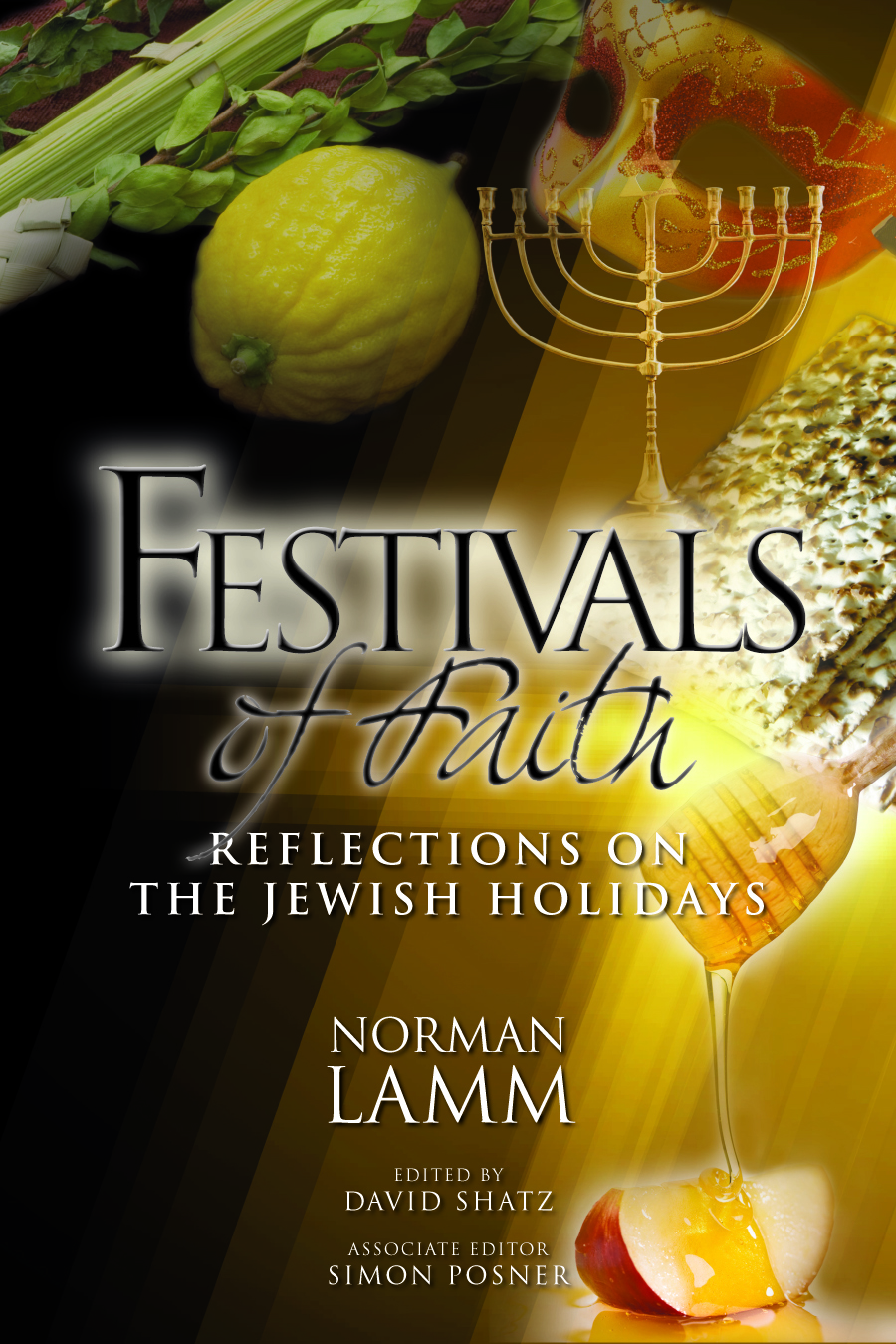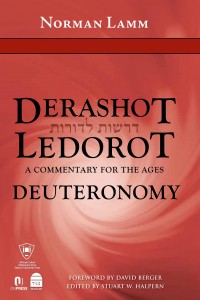Excerpted from Rabbi Norman Lamm’s Derashot Ledorot: A Commentary for the Ages– Exodus co-published by OU Press, Maggid Books, and YU Press; edited by Stuart W. Halpern
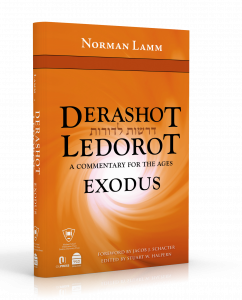 Living Up to Your Image
Living Up to Your Image
We read in this morning’s sidra of the instructions given to Moses to build the Tabernacle. Among other things, he is commanded to build the Ark, containing the Tablets of the Law. This aron, Moses is told, should be made of wood overlaid with “zahav tahor,” “pure gold,” both on the inside and the outside of the Ark: “mibayit umiĥutz tetzapenu”(Exodus 25:11).
Our Rabbis (Yoma 72b) found in this apparently mundane law a principle of great moral significance. Rava said: From this we learn that “kol talmid ĥakham she’en tokho kevaro eno talmid ĥakham,” “a scholar whose inner life does not correspond to his outer appearances is not an authentic scholar.” The Ark, or aron, as the repository of the Tablets of the Law, is a symbol of a talmid ĥakham, a student of the Law. The “zahav tahor,” “pure gold,” represents purity of character. And the requirement that this gold be placed “mibayit umiĥutz,” both within and without the Ark, indicates the principle that a true scholar must live in such a manner that he always be tokho kevaro, alike inwardly and outwardly.
Thus, our Rabbis saw in our verse a plea for integrity of character, a warning against a cleavage between theory and practice, against a discontinuity between inwardness and outwardness, against a clash between inner reality and outer appearance. A real Jew must always be tokho kevaro.
Now that sounds like a truism, but it is nothing of the sort. As a matter of fact, at a critical juncture of Jewish history this requirement was the occasion for a famous controversy. The Talmud (Berakhot 27b) refers to the time when the Patriarch of Israel, Rabban Gamliel, the aristo cratic descendant of Hillel, was deposed from his office as the head of the Sanhedrin, and Rabbi Elazar ben Azaria was elected in his place. Rabban Gamliel had always been strict about the requirement of tokho kevaro: he declared that any students who could not say unhesitatingly that they possessed the quality of tokho kevaro were not permitted to enter the academy. When Rabbi Elazar ben Azaria ascended to this office, he cancelled the requirement that every student should have attained this balance between inner life and outer life. As a result, many more students were attracted to the academy, and from four to seven hundred new benches had to be placed in the study hall. In other words, the question was: Does a failure to achieve tokho kevaro disqualify someone? Rabban Gamliel answered “yes.” Rabbi Eliezer said “no.” The latter maintained that the absence of tokho kevaro invalidates his credentials as a talmid ĥakham, a scholar, but not as an average ethical personality. Even if one has not yet attained this ideal of character, let him study Torah and eventually he will learn how to achieve tokho kevaro.
At any rate, both these Sages agree that tokho kevaro is a great and worthy Jewish ideal.
But if so, we are confronted by a problem in Jewish ethics. There are times when Jewish law does distinguish between private and public conduct. There is, for instance, the famous halakhic concept of marit ayin, that is, that we must avoid even the semblance of wrong-doing. Thus, for instance, the Talmud tells of a man who walks in the fields on the Sabbath and falls into water or is caught in a downpour and is drenched. When he removes his clothing, the Talmud tells us (Shabbat 146b) he should not place them in the sunlight to dry, for fear that his neighbors, not knowing of his accident, will assume that he had laundered his clothing on Saturday and thus violated the Sabbath. Or, as another example, the Shulĥan Arukh (Yoreh De’a 87:3) prohibits drinking coconut milk at a meat meal lest an onlooker assume that the law against eating meat and milk together is being violated. Therefore, a coconut shell should be placed on the table to eliminate any chance for such misinterpretation. Similarly, in the context of our own lives, even completely non-dairy margarine should not be used during a meat meal, unless the carton is on the table, thus avoiding the possibility of imputing to us the transgression of the law against eating milk with meat.
Now is not this law of marit ayin in violation of the concept of tokho kevaro? If in his heart a man knows that he is doing no wrong, should he not act the same way outwardly, ignoring others and their suspiciousness?
In addition to marit ayin, there are other instances where the Halakha distinguishes between inner and outer life. Thus, ĥillul Shabbat, the violation of the Sabbath, is at all times a most serious infraction of the Halakha. Yet ĥillul Shabbat befarhesya, violating the Sabbath in public, is considered far worse than doing so in the privacy of one’s own home. Or, to take another example, ĥillul Hashem, the profanation of the divine Name, is considered a dreadful sin; to disgrace God is always disgraceful. But to perform ĥillul Hashem berabbim, to desecrate God’s Name in public, is not only disgraceful but totally unforgiveable.
Do not these instances also reveal that the Jewish tradition does not always maintain the principle of tokho kevaro? Does it not lend religious support to this deep gulf between the two aspects of every human life, the inner reality and the image in the eyes of others?
In order to understand what our tradition meant, it is important to read carefully the specific idiom that the Talmud uses. It recommendsthat we always strive for tokho kevaro, that our “inside” be similar to our “outside,” but it does not ask us to develop baro ketokho, an outer appearance that conforms to an inner reality. There is no demand that our external image be reduced to the dimensions of what we really are like within ourselves; there is, instead, a demand that we keep up the appearances of decency and Jewishness and honor, and then strive for tokho kevaro, for remaking our inner life to conform to the image that we project.
It often happens that the tokh, the inner life of man, is cruel and filthy and corrupt, whereas the bar, the outer image he projects in his circle and in his society, is clean and compassionate. Inwards, he is ruthless and crude; outwards, he is polite and delicate and considerate. Modern man has learned well the lesson that Freud taught: even infants, apparently so innocent, are seized by inner drives that are destructive and grasping. Of course, our grandparents, less modern and less sophisticated than we, knew the same principle from a more ancient and more reliable source than Freud. The Bible had already taught at the very beginning that “yetzer lev ha’adam ra mineurav,” “the inclination of the heart of man is evil from his very earliest youth” (Genesis 8:21).
Hence the Rabbis, contemplating this inner perversity and outer glitter, demand consistency – but in one direction only – tokho kevaro! Do not destroy your outer image; in fact, preserve it through the observance of marit ayin. Enhance it – and then live up to it! Develop a great outer life, and thereafter transform your inner life in order to equalize your whole existence. Those who reverse the procedure, and act with crudeness and vulgarity because they think that this is being consistent with their real thoughts, because it shows that they are “sincere,” are ignorant – and worse. There is a certain tyranny in such sincerity which is used as the rationalization for being a bully.
It is therefore naïve and dangerous for a man to act the way he is; he should try to be as decent as the way he acts. It is not so important that I say what I mean; it is more important that I mean what I say.
Thus we may understand the significance of the concept of marit ayin. It protects my public image and the social model that I project, and I then have something to live up to as I strive for the realization of tokho kevaro. Even as the Ark containing the tablets must be placed with pure gold “mibayit umiĥutz,” “inside and outside,” so too man must live up to the highest ideals both in his inner life and his outer appearance.
Unfortunately, some otherwise good Jews act lightly with regard to the principle of marit ayin and dismiss it offhand. Worse yet, some flippantly regard it as a kind of hypocrisy. But this attitude only shows their confusion and insensitivity. Hypocrisy is a conscious misleading of people, an acting out of a role I didn’t believe in. In Hebrew, hypocrisy is “tzeviut,” which literally means “painting”; for I purposely and consciously project an image which I do not want to be my reality. I pretend to be what I don’t even care to be. A man who comes to synagogue services regularly because it is good for his business, but who does not really care about religion at all, is a genuine hypocrite. But if one comes to shul despite his non-observance at home or in the office because he desires to learn, or wishes to be instructed, or hopes to be inspired, or if he is confused and he is looking for a way out of his dilemma – then his approach is not only intelligent but honorable. The next step, one which qualifies an ordinary human being as a scholar, is – tokho kevaro! It is important, therefore, to build up your image and then live up to it.
To reject the principle of marit ayin is to commit three fundamental mistakes. First, it is a reduction of the kavod hatzibur, the honor of the community, for by giving the appearance of wrong-doing, I lower the level of public observance of the laws of decency and the Torah in general. Second, it is a diminution of the kevod haShekhina, the honor due to God, for by giving the impression that I do not care about His laws, I have committed ĥillul Hashem, the desecration of the divine Name. Finally, a flippant attitude towards marit ayin represents a self denigration, a lapse of kevod atzmo, of the honor due to one’s self – for I have given myself a petty image, and therefore I must remain with a trivial inner self.
But let us take that argument one step further. Not only must I observe the principle of marit ayin, which is negative, in the sense of not harming my image, but in a positive sense that I must undertake a conscious creation of a greater image even if it is only in my own eyes, and then proceed to tokho kevaro.
Thus, to take one example: In the technopolitan culture in which we live, with its busyness and its glitter and its gadgetry, we often fail to experience the emotional dimension of religion. One of the greatest commandments in the Torah is ahavat Hashem, “Thou shalt love the Lord thy God” (Deuteronomy 6:5). But how many of us can experience such love? What does one do if he feels that his inner resources have dried up, that he is incapable of any deep experience or feeling? Rabbi Shneur Zalman of Liadi, founder of the Habad movement of Hasidism, recommends a solution (Tanya, Likutei Ma’amarim 15): Act as if you are possessed of ahavat Hashem, not in the eyes of others but in the eyes of your own self. Live as if you were possessed of a passionate love of God – and sooner or later, the outer appearance will evoke an inner love, the image will create the reality, and by the process of tokho kevaro you will indeed arrive at a level of genuine love. Otherwise, we are left only with despair and never can make any progress.
The same is true of one’s social relations. Just as we are commanded to love God, so do we have a commandment of ahavat rei’im, the love of neighbor or fellow. Yet this commandment is much easier to advocate than to practice, for what if one has unlovable neighbors? What if one has not the ability to love his fellow men as he thinks he ought to? An insight to the solution is provided by Rabbi Samson Raphael Hirsch, who points to the peculiar grammatical construction of this commandment. The Torah says (Leviticus 19:8): “ve’ahavta lere’akha kamokha,” “Thou shalt love thy neighbor as thyself.” Actually, the normal Hebrew should be “Thou shalt love et re’akha,” rather than “lere’akha.” The way it is written, the verse should be literally translated as “Thou shalt love to thy neighbor as thyself.” What does this mean? Rabbi Hirsch answers: Genuine love of one’s neighbor must come later; first one must love to him, i.e. one must act in a loving manner to him, one must play the role of the loving fellow man – and then ultimately he will indeed come to love him. First we must build up the image, and then, by the process of tokho kevaro, we come to achieve a new inner transformation.
As a final example, let us take the matter of joy or happiness. This week we welcomed the Hebrew month of Adar, about which our tradition teaches: “mi shenikhnas Adar marbim besimĥa,” when the month of Adar comes one must increase his happiness or joy. A beautiful idea; however, what if I am miserable? How can one command a person to be happy? I often talk to people who are deep in the doldrums, and the answer I usually receive – and a very genuine one – is: How can you encourage me when my luck is bad, my situation forlorn, my existence boring, my life dull, and pain ever present? But the answer of the Jewish tradition, accumulated in the course of three thousand years, is that happiness or joy is a state of mind which can be inspired from without as well as aroused from within. If one acts happy, one eventually emerges from under the burden of sadness. Hasidism made a great principle of this idea. They drank a “leĥayyim,” sang in the synagogue, and even danced, declared that sadness is a sin, and tried to inspire happiness, even artificially – and they succeeded. In a continent and in an age when European Jewry was seized with despair because of false messiahs, because of massacres and political persecutions, because of economic and cultural deprivation, Hasidism was able to inspire the idea of acting happy, and then being happy – by a process of tokho kevaro! Create a greater image than your reality is, and then change over your reality to conform to the image.
To summarize, then, what we have said: To demand, as some deluded people sometimes do, that we become baro ketokho, that we remake our outer life to conform to our inner life, is to condemn men to the lowest station of humanity and to deny them hope. However, to urge them towards tokho kevaro is to hold forth a realizable ideal in the finest tradition of Jewish ethical optimism. Through concern for marit ayin, we preserve that image. Through the other means we have mentioned, we enhance that image.
And then, we must live up to it: “mibayit umiĥutz titzapenu.”


